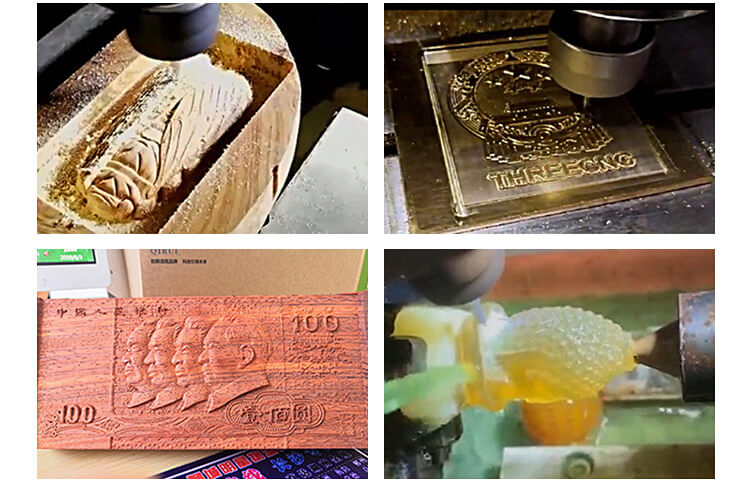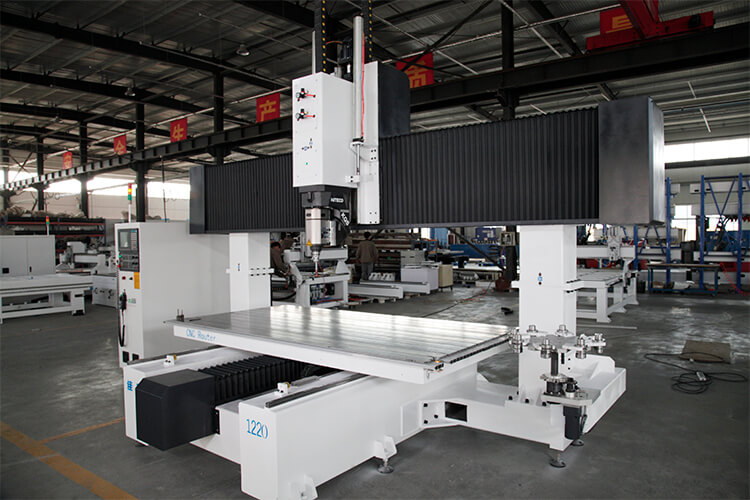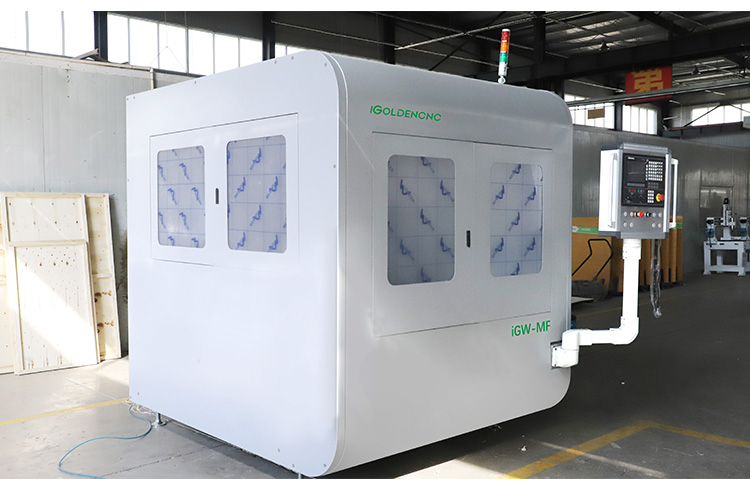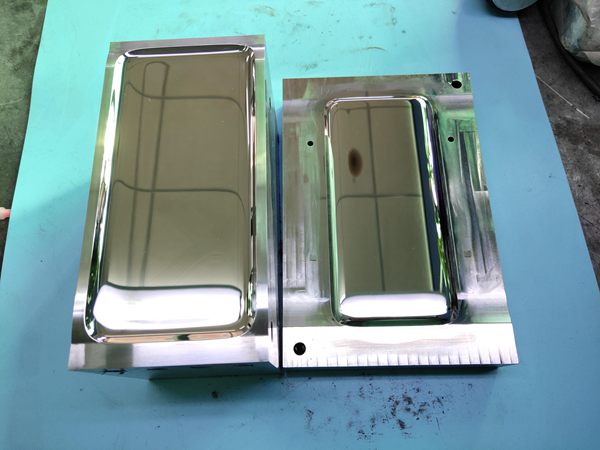In the world of fabrication, the CNC machine has revolutionized the way we work with wood and metal. This cutting-edge technology combines precision, speed, and automation to streamline the fabrication process and produce high-quality results.

CNC Machines for Wood and Metal
CNC machines for wood and metal are specialized tools that utilize computer-controlled movements to cut, shape, and carve materials with exceptional precision. These machines are equipped with cutting tools, such as routers or mills, that are guided by a computer program to execute complex designs and patterns. By automating the fabrication process, CNC machines offer increased efficiency, accuracy, and repeatability.
With our CNC machines, you can mill almost all materials in 2D and 3D. We show you some applications of milling aluminium, wood and plexiglass with excellent accuracy in this area. Create patterns of drilling, make drafts for your workpieces or create 3D contours.
CNC milling machine is mainly for cutting, carving, and milling various metals and non metals. It can process planes, grooves, split parts, spiral surfaces, and curved surfaces. And it can also be used to process surfaces and inner holes of a rotary body. The CNC milling machine falls in many types, such as elevating table, gantry, single-column, worktable non-lifting, and also the type for instrument, tool, and other purposes.




CNC routers are widely used in: small business, small shop, home business, home shop, craftsman, hobbyist, advertising, woodworking, signs, logos, letters, numbers, arts, crafts, building models, emblem, badge, display panels, furniture, and decorations.
1. It is suitable for machining compactly all sorts of materials such as brass, steel, iron, copper, aluminum, foam, wood, and plastics.
2. It is widely used in shoe mould, drop mould, automotive, injection mould, ironware mould and other mould industries.
3. The metal milling machine is especially designed for machining molds, eyeglasses, watch, panel, badge, brand, graphics and words of three-dimensional and outside surface’s sleeking of large size molds.
How CNC Machines for Wood and Metal Work
The operation of CNC machines for wood and metal can be summarized in the following steps:
- Design Creation: A digital design is created using computer-aided design (CAD) software. This design serves as the blueprint for the fabrication process.
- Tool Selection: The appropriate cutting tool is selected based on the desired outcome and the material being worked on. For wood, tools like routers or spindle cutters are commonly used, while for metal, milling cutters or drills are preferred.
- Material Preparation: The wood or metal material is securely clamped onto the machine’s worktable or held in place using specialized fixtures. This ensures stability during the cutting process.
- Machine Setup: The CNC machine is programmed with the design specifications, including the cutting paths, tool selection, and cutting depths. This programming is typically done using CNC software.
- Cutting Process: The CNC machine executes the programmed instructions, moving the cutting tool along the designated paths to shape and carve the material. The machine’s movements are precise and controlled, resulting in accurate and consistent cuts.
- Finishing and Quality Control: Once the cutting process is complete, the finished piece is inspected for quality. Any necessary finishing touches, such as sanding or polishing, are applied to achieve the desired final product.
Benefits of CNC Machines for Wood and Metal
1. Precision and Accuracy
CNC machines for wood and metal offer unparalleled precision and accuracy. The computer-controlled movements ensure consistent and repeatable cuts, eliminating human error. This level of precision is especially crucial in industries that require intricate designs and tight tolerances, such as furniture manufacturing, cabinetry, and metal fabrication.
2. Increased Efficiency and Productivity
By automating the fabrication process, CNC machines significantly increase efficiency and productivity. They can work continuously for extended periods, reducing production time and costs. Additionally, CNC machines can handle complex designs and patterns that would be time-consuming or challenging to achieve manually.
3. Versatility in Material Handling
CNC machines for wood and metal are highly versatile and can handle a wide range of materials. For wood fabrication, CNC machines can cut, carve, and shape various types of wood, including hardwoods, softwoods, and plywood. In metal fabrication, CNC machines can work with materials such as aluminum, steel, brass, and even more robust metals like titanium or stainless steel.
4. Customization and Design Flexibility
CNC machines enable designers and fabricators to bring their creative visions to life. The ability to program intricate designs and patterns allows for customization and design flexibility. Whether it’s creating unique furniture pieces, decorative metalwork, or intricate signage, CNC machines provide endless possibilities for creative expression.
5. Waste Reduction and Cost Savings
CNC machines optimize material usage, resulting in reduced waste and cost savings. The precise cutting paths and nesting capabilities of CNC machines allow for efficient material utilization, minimizing scrap and maximizing yield. This not only reduces material costs but also promotes sustainable practices by minimizing waste generation.
Applications of CNC Machines for Wood and Metal
CNC machines for wood and metal find applications in a wide range of industries. Here are some notable examples:
1. Furniture Manufacturing
CNC machines have revolutionized the furniture manufacturing industry. They can cut and shape wood pieces with precision, allowing for the production of intricate designs and complex joinery. CNC machines also enable the creation of custom furniture pieces, catering to individual preferences and design requirements.
2. Cabinetry and Woodworking
In the cabinetry and woodworking industry, CNC machines offer increased efficiency and accuracy. They can produce consistent and precise cuts for cabinet components, intricate moldings, and decorative details. CNC machines also streamline the process of creating custom woodwork, such as doors, panels, and ornamental carvings.
3. Metal Fabrication
CNC machines play a vital role in metal fabrication processes. They can cut, drill, and mill metal materials with precision, allowing forthe creation of complex metal components and structures. Industries such as automotive, aerospace, and construction rely on CNC machines for metal fabrication, as they offer high accuracy and repeatability in producing parts and assemblies.
4. Signage and Engraving
CNC machines are widely used in the signage and engraving industry. They can carve intricate designs and patterns onto various materials, including wood, metal, acrylic, and plastic. CNC machines enable the production of detailed signage, plaques, nameplates, and personalized engravings with exceptional precision and clarity.
5. Prototyping and Rapid Manufacturing
CNC machines are invaluable in the prototyping and rapid manufacturing processes. They allow for quick and accurate production of prototypes, enabling designers and engineers to test and refine their designs before mass production. CNC machines also offer the flexibility to produce small batches or one-off custom parts, reducing lead times and costs associated with traditional manufacturing methods.
Frequently Asked Questions (FAQ)
1. What are the main types of CNC machines for wood and metal?
There are several types of CNC machines used for wood and metal fabrication, including CNC routers, CNC mills, CNC lathes, and CNC plasma cutters. Each machine type is specialized for specific applications and materials.
2. Can CNC machines work with other materials besides wood and metal?
Yes, CNC machines can work with a variety of materials, including plastics, composites, foam, and even stone. The versatility of CNC machines makes them suitable for a wide range of industries and applications.
3. Are CNC machines difficult to operate?
While operating CNC machines requires technical knowledge and training, modern CNC machines are designed to be user-friendly. The programming and operation of CNC machines can be learned through training programs or online resources. Additionally, many CNC machines come with intuitive software interfaces that simplify the programming process.
4. How long does it take to program a CNC machine for a specific design?
The time required to program a CNC machine depends on the complexity of the design and the operator’s proficiency. Simple designs can be programmed relatively quickly, while more intricate designs may require more time and expertise. However, once a design is programmed, it can be saved and reused for future production, reducing programming time for subsequent projects.
5. Can CNC machines replace traditional woodworking and metalworking techniques?
CNC machines offer numerous advantages in terms of precision, efficiency, and productivity. However, traditional woodworking and metalworking techniques still have their place in certain applications. Skilled artisans and craftsmen can combine traditional techniques with CNC technology to achieve unique and intricate results that showcase the beauty of handcrafted work.

IGOLDEN BLOG
Thank you for visiting the iGOLDENCNC website. iGOLDENCNC is the professional supplier of CNC machinery application solution, within the business of producing and selling CNC machinery and accessories.